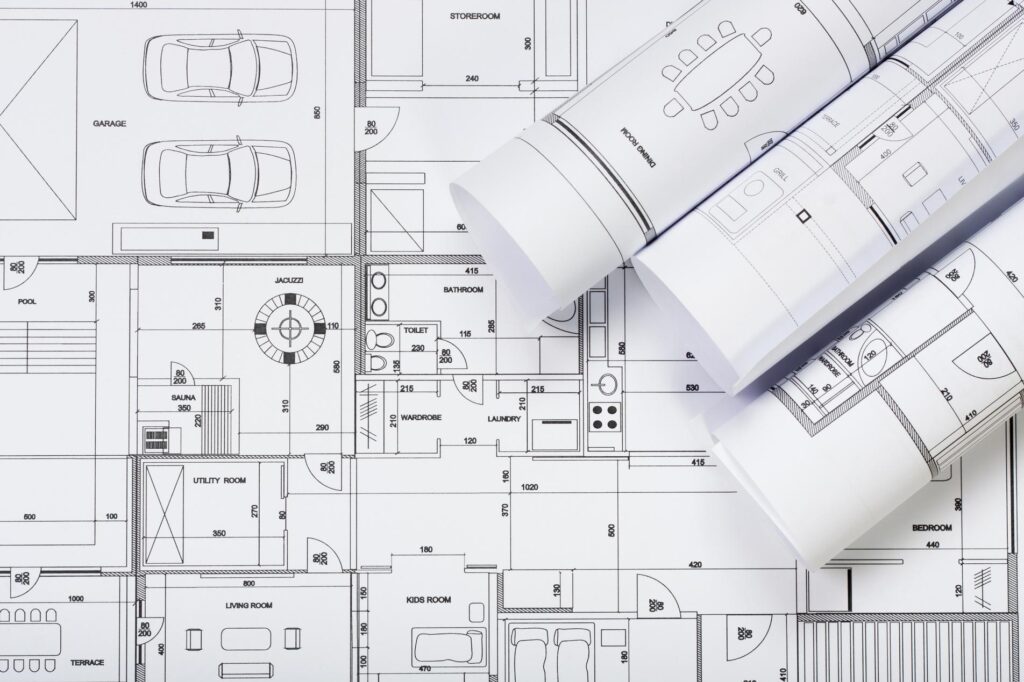
When it comes to building a home, one of the most critical elements is the floor plan. It sets the foundation for how the space will be used and experienced. A well thought-out floor plan not only enhances the functionality of a home but also contributes to its overall aesthetic and value. Whether you’re building a custom home, renovating an existing space, or investing in a spec home, understanding key floor plan guidelines can make all the difference in creating a space that truly works for you.
1. Understanding Your Lifestyle and Needs
The first step in designing an effective floor plan is to consider your lifestyle and daily needs. A young family with children will have different requirements compared to empty nesters or individuals who frequently entertain guests. Think about how you use your current space. Do you need a home office? Would an open-concept kitchen and living area suit your needs, or do you prefer more separation between spaces?
Key Considerations:
- Number of bedrooms and bathrooms
- The necessity of dedicated spaces such as a home office, gym, or playroom
- Future needs, such as additional bedrooms or accessibility features
2. Maximizing Flow and Functionality
A good floor plan promotes a natural flow between spaces. It’s about creating a layout that feels intuitive and practical. The placement of rooms should support your daily routines. For instance, placing the laundry room near the bedrooms can save time and effort, while locating the kitchen near the garage can make grocery unloading more efficient.
Key Considerations:
- Adjacency of high-use rooms, like the kitchen, living room, and dining area
- Logical placement of utility spaces like laundry rooms and mudrooms
- Accessibility and ease of movement between rooms
3. Zoning: Public vs. Private Spaces
Effective zoning is a crucial aspect of any floor plan. It separates public areas, such as the living room and kitchen, from private areas like bedrooms and bathrooms. This not only enhances privacy but also helps manage noise and maintain a sense of order in the home.
Key Considerations:
- Separate sleeping areas from high-traffic zones
- Designate a quiet workspace away from living areas
- Create a balance between open and enclosed spaces
4. Open-Concept vs. Traditional Layouts
One of the biggest decisions in floor plan design is whether to opt for an open concept layout or a more traditional, segmented approach. Open-concept designs are popular for their spacious feel and the way they promote social interaction. However, they may not suit everyone, especially if you prefer defined rooms or need quiet, private spaces.
OPEN-CONCEPT PROS:
- PROMOTES SOCIAL INTERACTION AND ALLOWS FOR FLEXIBLE USE OF SPACE
- ENHANCES NATURAL LIGHT AND AIRFLOW
OPEN-CONCEPT CONS:
- Can lack privacy and sound control
- May feel less organized without defined boundaries
TRADITIONAL LAYOUT PROS:
- Provides privacy and distinct spaces for different activities
- Better sound management between rooms
TRADITIONAL LAYOUT CONS:
- Can feel compartmentalized and reduce natural light flow
- Less flexible for multi-purpose use
5. Optimizing Room Sizes and Proportions
Room size and proportion are essential to creating a comfortable and functional living environment. A well-proportioned home ensures that each room feels spacious without being oversized. For example, a grand master bedroom might sound appealing, but not if it comes at the expense of cramped common areas or insufficient storage space.
Key Considerations:
- Scale rooms to match their purpose (e.g., larger living rooms for entertaining)
- Avoid oversized rooms that waste space and increase construction costs
- Ensure adequate storage and utility space
6. Incorporating Natural Light and Views
Natural light can transform a space, making it feel larger, brighter, and more inviting. When designing a floor plan, consider window placement and how natural light will enter each room throughout the day. Similarly, take advantage of any scenic views by orienting living spaces or master bedrooms toward them.
Key Considerations:
- Maximize window placement in living areas and bedrooms
- Use skylights or transom windows to bring light into darker spaces
- Consider outdoor living areas as extensions of indoor spaces
7. Flexibility and Future-Proofing
Your needs and lifestyle may change over time, so it’s wise to design a floor plan with flexibility in mind. This could mean adding a guest room that can double as a home office, or designing a basement that can be finished at a later date.
Key Considerations:
- Plan for possible future expansions or changes in family dynamics Include multi-purpose spaces that can evolve with your needs
- Consider resale value and appeal to future buyers
8. Budget Considerations
While it’s easy to get carried away with design ideas, it’s crucial to keep your budget in mind. A well-designed floor plan should align with your financial parameters without compromising on functionality or aesthetic.
Key Considerations:
- Prioritize features that add the most value to your lifestyle and home
- Be mindful of construction costs associated with complex designs
- Focus on energy-efficient and sustainable options that lower long-term costs
Conclusion
A well-designed floor plan is the backbone of any successful home build or renovation. By carefully considering factors like lifestyle needs, space flow, zoning, and future flexibility, you can create a home that is not only beautiful but also functional and adaptable. At Bamkoles Design Build, we believe in crafting floor plans that reflect your unique vision while ensuring practical and lasting value. Whether you’re starting from scratch or reimagining an existing space, our team is here to guide you every step of the way.